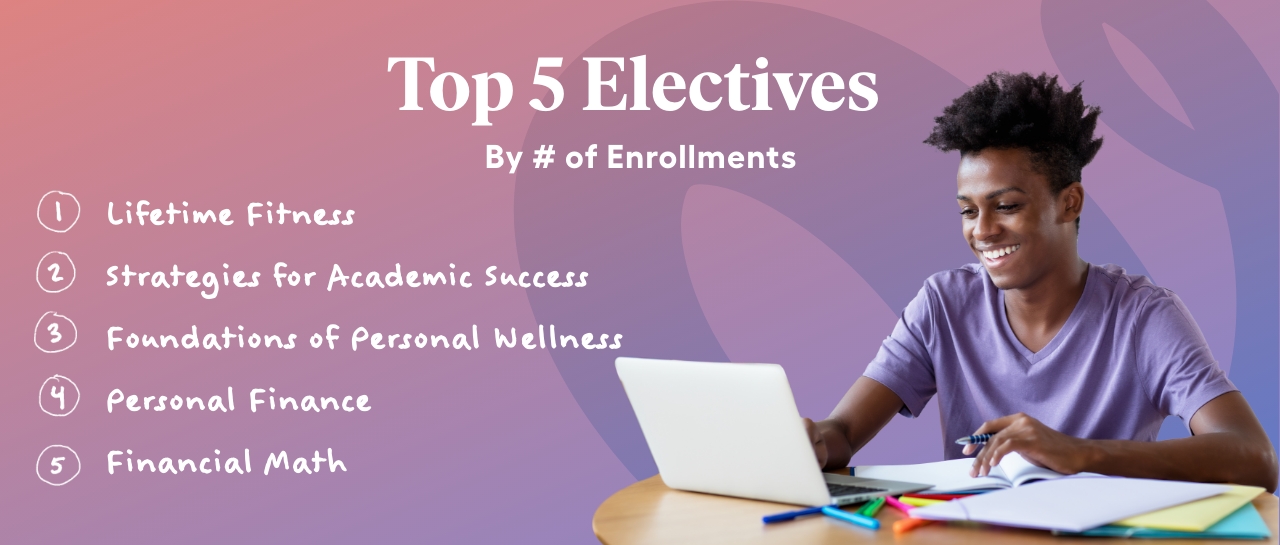With lessons like dorm cooking, changing your oil, and saving money while grocery shopping on the syllabus, “Adulting 101” teachers can rest assured that students won’t be asking the ever-frustrating question, “When will I use this in life?” Aimed at teaching life skills like budgeting and maintaining physical fitness after high school, “adulting” classes have recently taken off. Skills such as preparing taxes and learning how insurance works are largely viewed as outside of the academic sphere, but, for that precise reason, young adults are entering the “real” world needing to Google things like “W-2” and “deductible.” While these classes are often hosted at local libraries and attended by recent to not-so-recent high school graduates, a Kentucky high school has proven that there is not only a need but a desire for the class before graduation as well.
Looking at the highest enrolled Imagine Edgenuity electives for the 2021-22 school year, it is clear that practicality is in demand.

When given the option, students choose to learn how to take care of themselves – from their physical health to their finances. Depending on post-graduation plans, that calculus class may or may not be vital, but the most popular electives promise skills that everyone will be able to use.
1. Lifetime Fitness
Only 23.2% of adults aged 18 and over met physical activity guidelines in a recent study. After exploring fitness topics such as safe exercise and injury prevention, nutrition and weight management, consumer product evaluation, and stress management, Lifetime Fitness students leave the course equipped with the skills they need for a lifetime of fitness – including an exercise program designed to meet their individual goals.
2. Academic Success
More than 25% of recent high school graduates wished that their high school had prepared them with study skills for college. Students who took the Academic Success course don’t have that same wish. Offering a comprehensive analysis of different types of motivation, study habits, and learning styles, this course encourages high school and middle school students to take control of their learning by exploring varying strategies for success.
3. Personal Finance
“Nearly a third of young adults in a recent study were found to be ‘financially precarious’ because they had poor financial literacy and lacked money management skills and income stability.” Personal Finance students are well on their way to financial literacy after learning more about economics and becoming more confident in setting and researching financial goals. They learn how to open bank accounts, invest money, apply for loans and insurance, explore careers, manage business finances, make decisions about major purchases, and more.
4. Foundation of Personal Wellness
A recent study found that less than 38 percent of adult participants consumed a healthy diet. Largely, this isn’t due to a lack of desire, but a lack of resources and understanding. Upon completing Foundation of Personal Wellness where they explore a combination of health and fitness concepts as well as all aspects of wellness, students are equipped with the knowledge it takes to plan a healthy lifestyle.
5. Financial Math
86% of teens are interested in investing, but 45% say they don’t feel confident in doing so. That interest explains why students were eager to enroll in Financial Math this year. The course features relevant, project-based learning activities covering stimulating topics such as personal financial planning, budgeting and wise spending, banking, paying taxes, the importance of insurance, long-term investing, buying a house, and more.
Skipping the “flashy” or “fun” electives that we might expect them to choose reveals what students really want to learn: practical, life-applicable skills. These selections help students build a foundation of useful knowledge so that, when they get out into the real world, they won’t be registering for their local “Adulting 101” course.
About the Author – Ally Jones
Ally Jones is a California credentialed educator who specialized in teaching English language learners at the secondary level. Outside of education, she is passionate about fitness, literature, and taking care of the planet for her son’s generation.